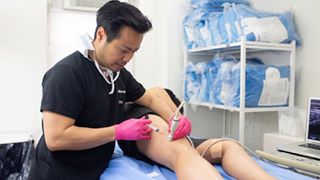Do you have swollen leg veins? Do they cause you pain or itching? It may be varicose veins. Varicose veins as the name suggests are abnormalities in the veins. It results generally in the enlargement of thigh and feet veins.

If you are suffering from varicose veins, your priority should be the treatment. Varicose veins cause abnormalities in the skin and may lead to certain other health issues including your heart, if not scrutinized.
The varicose vein removal procedure is carried out in several different ways. Today, with the advancement in technology there are several methods for the treatment of varicose veins. At present, you may be able to get many advanced procedures for the treatment of varicose veins instead of stripping surgery.
Signs of Venous Insufficiency:
There are two types of blood vessels in our body; veins and arteries. The role of arteries is to carry oxygenated blood to the different body parts, while veins carry deoxygenated blood back to the heart. There are valves spread through the vein that helps carry the blood to the heart. With time, valves become dysfunctional and hence a venous reflex is created. The blood falls back, leading to venous insufficiency.
The primary signs of venous insufficiency are;
- Leg cramps
- Swelling in the legs
- Throbbing and pain in legs
- Itching and thickness of the skin
- The tightness of the calves
- Varicose veins and spider veins
What are the different varicose vein treatment options?
If you see any symptoms of varicose veins, treatment may be required to avoid discomfort and reduce pain or swelling. The best treatment for you depends upon your unique venous anatomy. There are various options to remove varicose veins;
Surgery: is done when varicose veins are large. It is usually done under general anaesthetic.
Litigation and Stripping: are done using a thin flexible wire which is threaded through the bottom of the vein and is pulled out taking the vein along. Litigation may sometime result in bleeding and pain.
Sclerotherapy: is done by injecting a chemical into the varicose veins which scar tissues and closes them. They should fade a few weeks later
Radiofrequency Ablation: This is done by making a small incision in the leg. Then a narrow tube is threaded into the vein with the help of the ultrasound machine. The radiofrequency heat up the vein, effectively closing and sealing the vein. It is an effective and proven method to treat venous insufficiency.
Endovenous Laser Therapy: is done using a catheter that is inserted into the patient’s vein. A laser is passed through the catheter and is positioned on the target vein, which leads to heating of the vein and sealing it closed. The procedure is performed under a local anaesthetia. Laser vein removal cost depends on the severity of the veins. It is usually around $600 to $3500 but may vary from one individual to another.
Ambulatory phlebectomy: is done to remove superficial veins through a slit-like incision through the skin. The procedure takes about 1-3 hours depending upon the severity.
How Spider Veins are cured?
Spider veins happen due to poor circulation of blood. It is usually caused in the veins slightly deeper within the legs. It’s important to remember that prior to spider veins treatment a comprehensive vein evaluation is necessary. Though spider veins are usually harmless, yet spider veins cure is available in case of itching or pain which includes sclerotherapy and laser therapy.
If you start to develop any such symptoms or skin ulcers, the first thing to do is to contact a vein specialist or a dermatologist right away.
Article Source : https://legveinsblog.wordpress.com/2019/07/06/having-venous-insufficiency-how-can-it-be-removed/






Comments